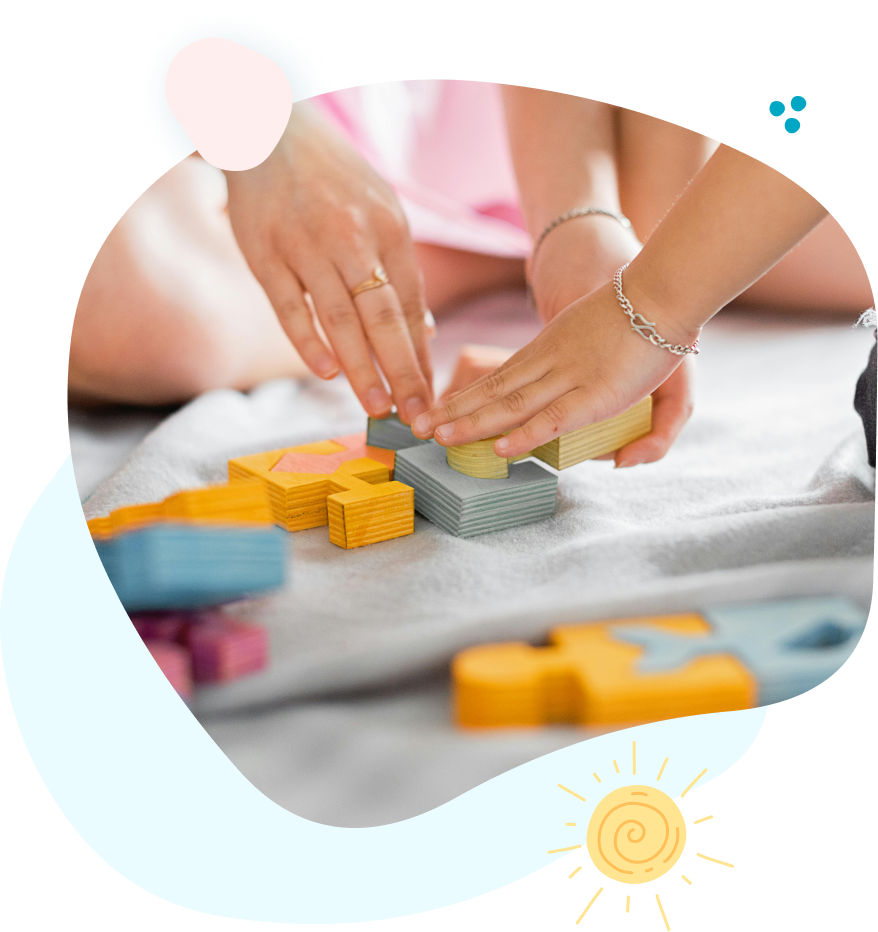Your Clinic
SET A LOCATION
Your Clinic
SET A LOCATION
Fine motor skills are crucial movements that involve the small muscles of the hands and wrists. These skills enable children to perform essential tasks such as writing, using scissors, buttoning clothes, and picking up small objects. Proper development of fine motor skills is critical for success in daily life and academic settings.
However, some children experience delays that make these tasks challenging. In such cases, occupational therapy can play a pivotal role in fostering growth and building essential skills.
Fine motor delays can manifest in various ways, impacting how a child interacts with their environment. Common signs of fine motor delays include:
Difficulty grasping or holding small objects, such as pencils or buttons.
Trouble with hand-eye coordination, which affects activities like coloring or puzzles.
Slow or awkward handwriting and challenges with forming letters.
Problems with daily self-care activities, such as dressing or using utensils.
Early identification of these delays is essential to prevent frustration and enhance a child’s overall development.
Children working on fine motor skills benefit from our comprehensive therapeutic tools that develop hand strength, dexterity, and coordination. These interventions support success in writing, self-care tasks, and manipulating small objects.


Helps students master legible and fluent handwriting through a hands-on curriculum that complements Occupational Therapy with visual, tactile, auditory, and kinesthetic activities. This evidence-based program uses developmentally appropriate methods to teach children proper letter formation, spacing, and writing fluency through multisensory approaches.
Korro AI is an innovative platform revolutionizing occupational therapy with artificial intelligence. Designed to streamline therapy planning and enhance patient outcomes, Korro AI empowers therapists with data-driven insights, automated progress tracking, and personalized treatment recommendations. This cutting-edge technology helps optimize therapy sessions and provides objective measurements of progress.
Occupational therapy (OT) offers a structured approach to support children with fine motor delays. Through customized interventions, children are empowered to improve their skills, boost their confidence, and gain independence in daily tasks.

Occupational therapists begin by assessing a child's current abilities through observations, standardized tests, and discussions with caregivers. This thorough evaluation helps pinpoint specific areas of difficulty. From there, therapists create tailored goals that align with the child’s developmental stage and unique needs.
Occupational therapists use a variety of techniques to promote fine motor development. These include:
Activities like squeezing putty, using tweezers to pick up small objects, or threading beads enhance hand strength and dexterity.
Fun activities, such as building with blocks or completing mazes, improve coordination between visual input and motor output.
Therapy often feels like play to children, making it engaging and enjoyable. Games that require precise movements, like puzzles or crafting, help develop fine motor skills.
Occupational therapists may introduce special tools like pencil grips, scissors with spring-assisted handles, or other devices to make tasks easier and more manageable.


Parents and caregivers play a critical role in reinforcing skills at home. Occupational therapists often provide exercises, games, and strategies for parents to incorporate into daily routines. This continuity between therapy sessions and home life is key to sustained progress.
Occupational therapy (OT) provides numerous benefits for children facing fine motor challenges:
With improved fine motor skills, children can dress, feed, and care for themselves more independently.
Skills like writing and cutting, which are vital for classroom activities, show significant improvement.
Success in tasks previously deemed difficult boosts a child’s confidence and self-worth.
Children gain the skills needed to participate more fully in play and group activities.
Consider a child who struggled to hold a pencil and complete school assignments. Through targeted occupational therapy (OT) interventions—like hand-strengthening games and writing practice with adaptive tools—the child gradually improved, gaining both skill and confidence. Today, they actively participate in class activities, write more comfortably, and approach new tasks with enthusiasm.
If your child shows difficulty with activities like holding utensils, buttoning clothes, or other hand-based tasks by preschool age, it may be beneficial to consult with an occupational therapist.
The duration of therapy depends on the severity of the delay and the child’s individual progress. Many children show significant improvement within months of consistent therapy.
Engage your child in fun activities like crafts, building with blocks, or using kitchen tongs during play. Occupational therapists can offer specific strategies tailored to your child’s needs.
Fine motor skill development is essential for a child’s growth and independence. Occupational therapy (OT) offers targeted, engaging support to help children overcome delays, building their skills and confidence along the way. If you’re concerned about your child's fine motor abilities, reach out to a qualified occupational therapist today to explore tailored solutions that work.
Contact us to learn more about our occupational therapy services for children.
We empower children, families, and the community to learn, grow, and celebrate every child's unique abilities.
Quick Links
Contact Details
Phone: 561-376-2573 | 561-918-0190
Fax: 561-218-4939
VIP Concierge: 561-717-1764
Clinic Locations
All Rights Reserved | Progressive Pediatric Therapy, Inc. | Privacy Policy | Terms of Service
Site by Spearlance